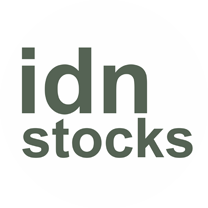Tempuran Emas Proxy to Infrastructure
We see several infrastructure developments that will bring a positive impact on the domestic container vessel industry such as Tempuran Emas (TMAS) (please refer to our recent Maritime/Shipping Industry report). The Indonesian Port Corporation (IPC) is proposing a presidential decree, expected to be issued in 1Q13, to speed up the construction of the upcoming Sorong Port in West Papua, which forms part of the enlarged Pendulum Project, according to Richard Joost Lino, IPC II president director.
This USD104m project is a collaboration between Pelindo and five shipping firms – Tempuran Emas (TMAS), Samudera Indonesia (SMDR), Meratus Line, Salam Pacific Indonesia and Tanto Intim Line. The Pendulum Project, which will operate in six ports to boost the container business and reduce logistics costs, will initially focus on the four ports of Belawan, Tanjung Priok, Tanjung Perak and Makassar, which together contribute 70% of Indonesia’s overall port storage capacity.
Vice Minister of Transportation, Bambang Susantono, said that the average cost of container shipping from Tanjung Priok port to Belawan port is expected to decline to USD275/TEUs from the current USD400/TEUs while container shipments from Jakarta to Sorong are expected to reach only USD375/TEUs from the current USD2,000/TEUs once the Pendulum Project is implemented.
Given that TMAS is a pure domestic container shipping player, we see this company reaping the most earnings benefits. As Indonesia is moving towards improving port infrastructure as part of efforts to maintain robust economic growth, we see visibly strong demand for domestic containers in view of the healthy domestic consumption in the archipelago nation.
TMAS’ 2012 annualized earnings translate into a 3x 2012 PER. The company expects its 2013 revenue to jump 12% to 17% (around 2.5x GDP growth), although costs will remain an overhanging issue until we see an improvement in port infrastructure. It is worth noting that stevedoring and fuel costs, which account for 68% of the company’s COGS in 9M12, are port infrastructure-related costs.

